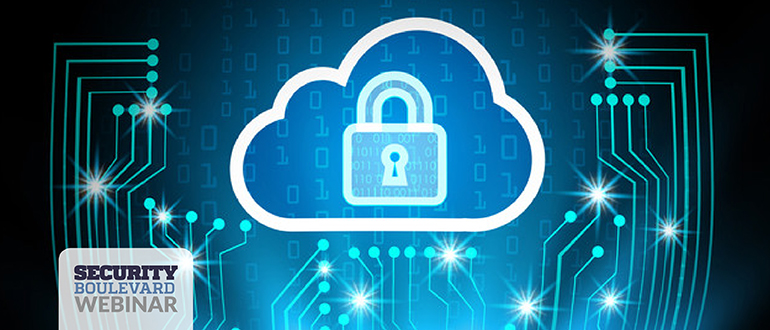Advances in cloud computing have made data security more complex. Hardening servers in data centers to protect sensitive information no longer provides adequate protection. The cloud has become a data warehouse for everything, and data security must keep up.
The amount of corporate data stored in cloud providers has doubled since 2015. More than 60% of corporate data is now stored in the cloud. Half of all companies store business records in the public cloud, and 89% use a multi-cloud approach, storing data in both public and private cloud systems.
In addition to data archives, cloud computing systems are used to share data. Remote workers increasingly rely on shared data stored in cloud services, such as OneDrive, Google Docs, and Dropbox, to do their jobs.
Moving data to public and private cloud services increases potential vulnerabilities. The cloud now contains more data that requires careful protection. Understanding cloud vulnerabilities and how to overcome them is essential to securing your data, including knowing what to do and what not to do.
Growing threats require better security.
The risks to data stored in the cloud have never been greater. Cybercrime has increased 600% during the COVID-19 pandemic. Phishing attacks account for 90% of data breaches, and 96% of these attacks are carried out via email. Ransomware is becoming a bigger problem, affecting 72.7% of organizations in 2023. There is a cyberattack every 39 seconds and a ransomware attack every 14 seconds.
Identity theft is a growing data security problem, with 1.4 million cases reported annually. Once a cybercriminal has stolen an identity, they can impersonate the victim and gain unauthorized access to sensitive company data and business systems, potentially causing significant damage or reputational harm.
Protecting data stored in the cloud requires more robust security measures. For example, identity access management has become more complex in the cloud era, going beyond managing access credentials, and single sign-on (SSO) helps IT professionals manage access to data. However, it is a double-edged sword that relies on the identity provider to provide access to files and data using technologies such as SAML (Security Assertion Markup Language).
As more and more IT professionals embrace automated provisioning tools, it is imperative to implement the principle of minimum privilege. Continuous monitoring and review of access controls ensures compliance with corporate security policies. Controlling access to critical data eliminates problems and prevents security and compliance issues.
New tools mean new security strategies.
New cloud infrastructures require new tools for managing data. The ever-changing state of the cloud creates a significant challenge in maintaining consistent and effective security policies. The dynamic nature of cloud environments introduces risks that were not a concern in on-premises systems. IT teams must constantly adapt to address emerging threats, and dedicated managed service providers must focus on data security around the clock.
In the public cloud, everything is connected. IT no longer has physical control over the network infrastructure, so it must rely on network segmentation, including firewall policies, to separate networks while giving users and applications access to data. Organizations often rely on built-in security mechanisms provided by cloud providers to secure office applications and remote workers, but these security measures are often inadequate.
Compliance remains a top consideration for any security strategy. Every organization maintains basic compliance requirements that define how data is handled securely. Internal protocols are supplemented and replaced by new compliance protocols to maintain security coverage. However, as organizations share data in the cloud, the compliance requirements for data sharing become blurred. For example, one of your partners may want to use Microsoft Teams to share data, but their compliance requirements are more stringent than yours. How do you work with them as a partner and meet their security compliance requirements?
Enhancing cloud data security
Cloud platforms offer organizations many advantages and are often viewed as an extension of existing infrastructure. They add scalability, flexibility, and business agility, making it easy to add resources quickly and efficiently. Companies looking to build their business in the cloud should have a well-developed data security strategy in place. Without a solid security plan, you could face unintended consequences if you expand too quickly.
There are specific factors to consider when evaluating the security posture of your cloud data:
Identity and Access Management. You should have a solid understanding of identity and access management, including the authentication mechanisms in place to access critical systems and data. Ensure that the principle of minimum privilege is applied and that those with access to data have appropriate credentials and authorizations. Network Security Assessment. Ask questions about network security and take stock of the security tools in use. No single product will likely meet all of your security needs, but some less expensive solutions may be more effective than expensive solutions that do not meet your security standards. Always match your network security solution to the problem. Encrypt your data. In addition to blocking access, you should do everything you can to protect your data. Encrypting your data may be the next step that protects you. Encrypt data at rest and in transit so that it cannot be copied. Visibility. You should be able to see what is happening to your data to ensure compliance and governance without complex processes. Having visibility into how your data is stored and managed and who is accessing and using your data is essential for auditing and compliance. Incident Response and Recovery. You may not be able to prevent a data breach, but you should be able to recover from it. Ensure you have secure backups of your data and mechanisms in place to recover in the event of a cyber attack.
First and foremost, make sure you have security professionals on hand. Security incidents often happen at night and on weekends, so make sure you have a security team ready to act as first responders. You should also make sure you have security professionals monitoring you.



